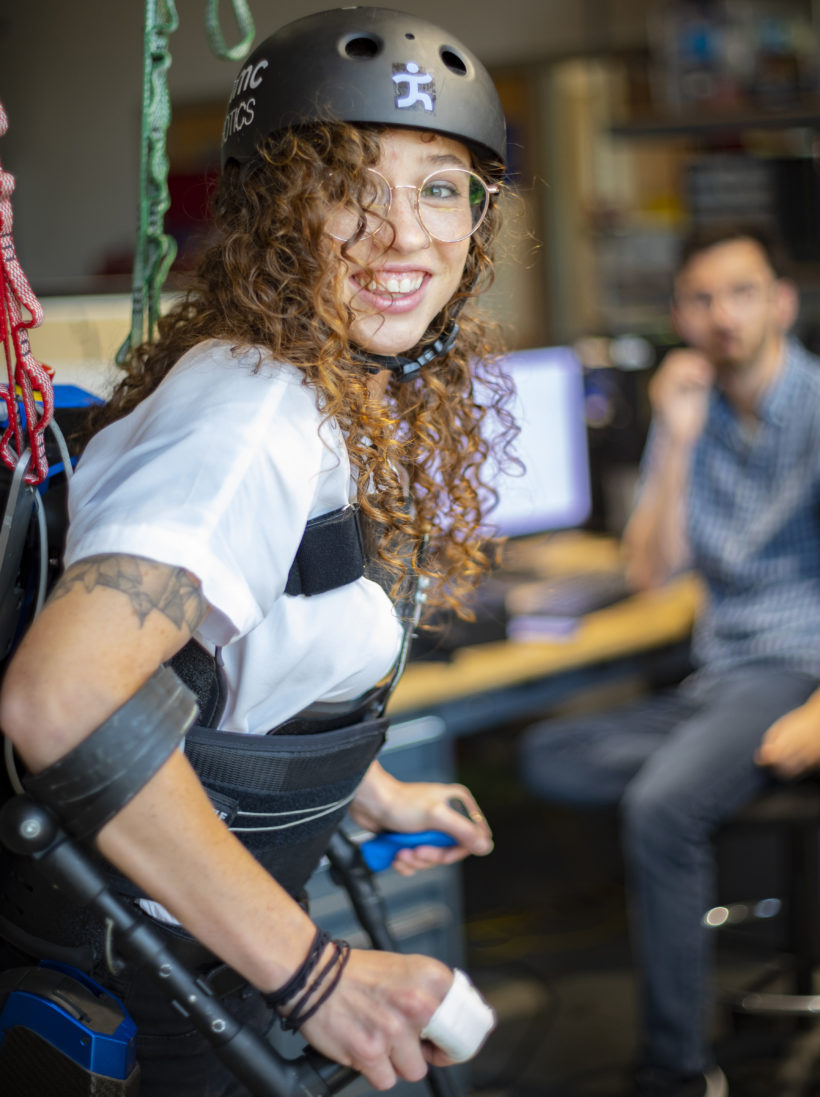Mechanical engineer Dr. Gwen Bryan will be the IHMC guest lecturer on January 19th.
Dr. Gwen Bryan recalls limping off the field as a soccer player in her youth. She later worked with people confronting debilitating injuries. Now, the Stanford University graduate and researcher at the Florida Institute for Human and Machine Cognition (IHMC) has merged her technical talents with her love of helping others by developing a device that enables mobility when it is either extremely difficult or impossible.
On January 19th, the New Mexico-born mechanical engineer will give a talk at IHMC in Ocala, titled Improving Human Performance Through Wearable Robotics, which will highlight her work developing an augmentative exoskeleton.

“We’re targeting two areas,” Bryan explains. “One is able-bodied individuals, Department of Energy workers who have really heavy PPE (personal protective equipment), such as air tanks between 20 and 50 pounds, and we’ve designed the device to offload that warm mass.” In other words, the device is carrying the weight instead of the person, Bryan notes.
“The other area is for people with a spinal cord injury (SCI)—that’s historically what IHMC has focused on—and the exoskeletons assist people who are paralyzed from the waist down. We’ve been developing a device to help them to be able to walk.”
According to Bryan, lower-limb exoskeletons have the potential to assist a wide range of patients in myriad locomotor activities. The devices can improve human capabilities or rehabilitate individuals with limited mobility or chronic injuries and could reduce the strain felt by those in high-intensity professions, such as laborers, military personnel or athletes.
Bryan has been working on getting the device to help a pilot who is paralyzed from the waist down achieve a more natural gait pattern.
“He is able to walk easier,” she says. “He’s been able to speed up his walking pace quite a bit with the gait change on the device.”
She also is seeking more real-time user feedback.
“So, looking at, say, muscle activity, and then tweaking what the device is doing to reduce how much shoulder activity he needs to use,” Bryan explains. “For example, when walking with the crutches, we see if the exoskeleton can minimize how much crutch force he has to use.”
Bryan and her cohorts are investigating augmentative and rehabilitative exoskeleton technology by leveraging their expertise in robotics and human performance. Figuring out what exactly different populations need and what would be helpful is at the heart of their research.
“We’re starting to look into healthy aging and also helping older adults to stay more mobile,” she adds. “That can be translated toward a lot of pathologies that people don’t necessarily know they have.” OS
The lecture, which will take place at 15 SE Osceola Ave., will begin with a reception at 5:30pm. To register to attend, go to ihmc.us/life/evening_lectures/ocala-lecture-series






